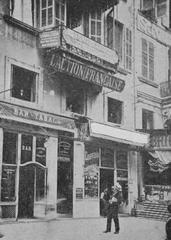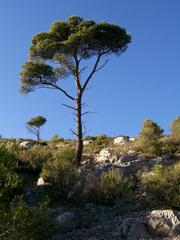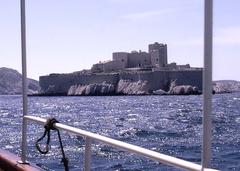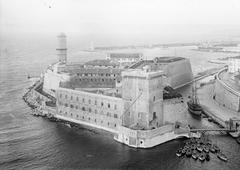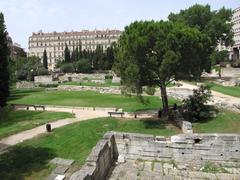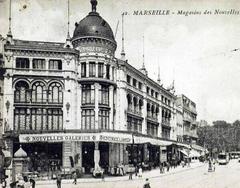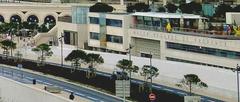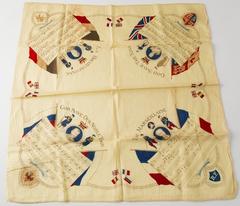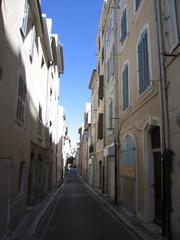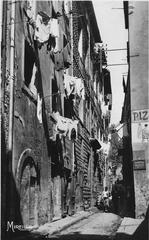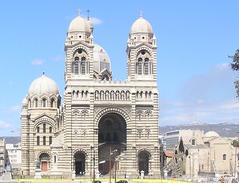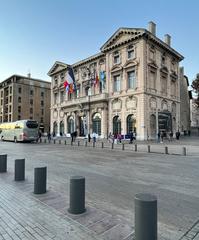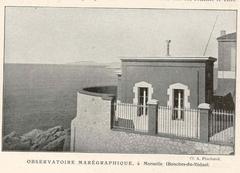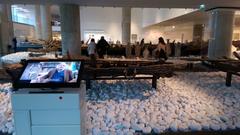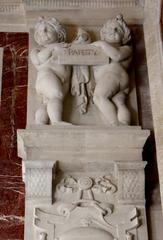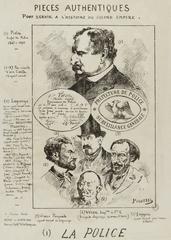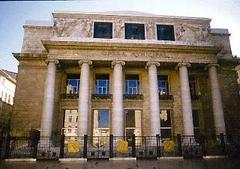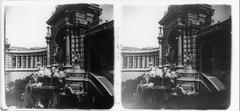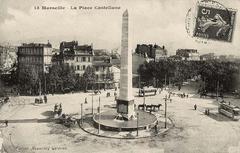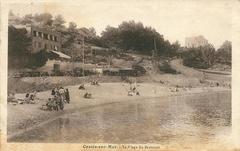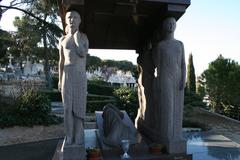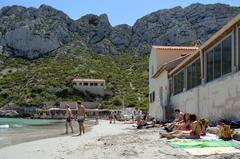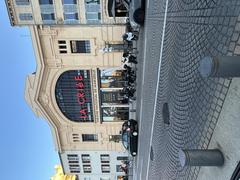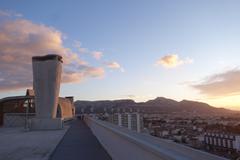Le Camas Marseille Visiting Hours, Tickets, and Historical Sites Guide
Date: 04/07/2025
Introduction to Le Camas Marseille
Le Camas, nestled within Marseille’s dynamic 5th arrondissement, is a neighborhood that seamlessly weaves together historical depth, architectural charm, and vibrant community life. Originally farmland owned by the Camas family and named after Jean Camas—a 17th-century humanitarian—the area has evolved into an urban quarter renowned for its 19th-century Haussmannian architecture, lively markets, and inclusive social spaces. Boulevard Chave, the main artery, stands as both a historical landmark and the backbone of neighborhood life, reflecting Marseille’s rapid urban expansion. Le Camas is beloved for its multicultural atmosphere, regular festivals, and accessible public spaces, offering something for families, cultural explorers, and casual visitors alike.
For further details and up-to-date visitor information, consult the Marseille Office de Tourisme, CMCA, Provence 7, and Wikipedia.
Table of Contents
- Introduction
- Early Origins and Agricultural Roots
- 19th-Century Urbanization
- Transport Evolution
- Social and Cultural Significance
- 20th Century and Modern Identity
- Heritage Sites and Landmarks
- Practical Visitor Information
- Community Life
- Cultural Institutions & Social Hubs
- Festivals & Seasonal Activities
- Neighborhood Amenities
- Integration with Marseille
- Visitor Tips
- FAQ
- Visuals & Media
- Conclusion
Early Origins and Agricultural Roots
Le Camas’s history begins with farmland belonging to the Camas family. The area’s namesake, Jean Camas, was a 17th-century humanitarian recognized for his aid during the plague (CMCA). Through the 18th and early 19th centuries, Le Camas remained a rural landscape of fields and orchards, laid on the edge of Marseille until urban growth transformed its destiny.
19th-Century Urbanization
Rapid population growth in 19th-century Marseille brought significant change to Le Camas. The construction of Boulevard Chave symbolized this shift, anchoring the neighborhood with elegant Haussmannian buildings—distinguished by wrought-iron balconies, pastel facades, and grand staircases—attracting both artisans and middle-class families (CMCA).
Transport Evolution
Public transport was crucial in shaping Le Camas. Tramway line 68, inaugurated in 1893, linked Le Camas to the broader city until its closure in 2004. Today, the modern T1 tram line and multiple bus routes keep the neighborhood connected and thriving (CMCA).
Social and Cultural Significance
Le Camas is a microcosm of Marseille’s diversity. Its proximity to Place Jean-Jaurès (“La Plaine”) makes it a focal point for markets, festivals, and civic events (marseille.fr). The neighborhood’s spirit is sustained by local associations, cultural centers, and a robust schedule of community gatherings.
20th Century and Modern Identity
The 20th century was marked by both hardship and renewal. Despite challenges such as wartime occupation and economic shifts, Le Camas retained its close-knit spirit, aided by schools, churches, and civic associations. Administrative reforms—most recently in 2015—integrated Le Camas more closely with Marseille, yet the neighborhood preserves a distinct identity rooted in history and communal life (Wikipedia).
Heritage Sites and Landmarks
Église Saint-Vincent-de-Paul (Église des Réformés)
A neo-Gothic masterpiece with twin spires and intricate stained glass, this church is a highlight for architecture lovers and spiritual seekers. Open daily 9:00 AM–6:00 PM, it offers guided tours and hosts concerts throughout the year (Marseille Office de Tourisme).
Église Saint-Michel
Marseille’s first neo-Gothic church, built in 1849, is a hub for both worship and community events. It is generally open 9:00 AM–6:00 PM, with free entry (Wikipedia).
Saint-Pierre Cemetery
The city’s largest cemetery is noted for its funerary art and historical tombs. Open from 8:00 AM–6:00 PM, with free access (marseille.fr).
Place Jean-Jaurès (La Plaine)
A lively market square and social center, recently renovated for accessibility and aesthetics, surrounded by bakeries, cafés, and shops (Carte de Marseille).
Statue of Fernandel & 19th-Century Sundial
Public artworks add cultural depth and photo opportunities to the neighborhood (Carte de Marseille).
Practical Visitor Information
Getting There
Le Camas is accessible by:
- Tram: T1 and T2 lines, with stops along Boulevard Chave.
- Metro: Line 1 (Saint-Just – Dromel station is nearby).
- Bus: Multiple lines connect the area to city center and main stations (Marseille Tourisme).
Visiting Hours & Tickets
- Neighborhood: Open access 24/7.
- Saint-Pierre Cemetery: 8:00 AM–6:00 PM (free).
- Église Saint-Vincent-de-Paul & Saint-Michel: 9:00 AM–6:00 PM (free; donations welcome).
- Markets: Most mornings, especially lively on weekends.
- Tours: Some local organizations offer guided walks; check with Marseille Office de Tourisme.
Guided Tours & Special Events
Free guided tours of Église Saint-Vincent-de-Paul are available Saturdays at 11:00 AM and 3:00 PM (advance booking recommended). Neighborhood festivals and markets occur year-round, notably at Place Jean-Jaurès and the Centre Social Tivoli-Le Camas.
Nearby Attractions
- Cours Julien: Artsy district a short walk away.
- Vieux-Port: Marseille’s Old Port, about 2 km from Le Camas.
Community Life
Le Camas maintains a village-like atmosphere amidst the city bustle. Its social rhythm revolves around local cafés, boutiques, bakeries, and essential services such as florists and pharmacies (Provence 7).
Cultural Institutions & Social Hubs
Centre Social Tivoli-Le Camas
The heart of community engagement, this center organizes:
- Solidarity meals and intergenerational events
- Sports and outdoor adventures
- Creative workshops for children
- Annual festivals, like the “Fête du 5ᵉ – Fête de la diversité”
The innovative “Bus de la jeunesse” extends activities to youth across priority neighborhoods.
Festivals & Seasonal Activities
Le Camas hosts a vibrant calendar:
- Regular neighborhood festivals with music, dance, and food
- Markets featuring local artisans
- Summer programs for children and families
- Youth-led events fostering creativity and participation
Neighborhood Amenities
Visitors enjoy:
- Traditional Provençal markets
- Independent boutiques and bistros
- Outdoor seating at cafés
- Parks and playgrounds
The area is safe, walkable, and offers bike-friendly streets.
Integration with Greater Marseille
Le Camas borders La Conception, Baille, and La Blancarde. Its location offers easy access to Palais Longchamp, Cours Julien, and Marseille’s central attractions (Voyage Tips), with efficient transport links.
Visitor Tips
- Best Time: Mornings for lively markets and café culture.
- Photography: Haussmannian streets, local markets, and public art make for stunning photos.
- Accessibility: Most sites are pedestrian-friendly; wheelchair access is available at major landmarks.
- Safety: The neighborhood is welcoming and community-oriented.
Frequently Asked Questions (FAQ)
Q: What are Le Camas’s visiting hours?
A: The neighborhood is open year-round. Key sites—such as Église Saint-Vincent-de-Paul and Saint-Michel—are open 9:00 AM–6:00 PM. Saint-Pierre Cemetery is open 8:00 AM–6:00 PM.
Q: Do I need tickets to visit landmarks?
A: Most are free to visit. Guided tours may require advance booking.
Q: How do I reach Le Camas?
A: Via tram (T1, T2), metro (Line 1), or bus.
Q: Are there guided tours?
A: Free church tours are offered; check with local centers for neighborhood walks.
Q: Is Le Camas family-friendly?
A: Yes, with parks, markets, and community events, it’s ideal for families.
Q: Any special events to plan for?
A: The “Fête du 5ᵉ – Fête de la diversité” and summer community programs are neighborhood highlights.
Visuals & Interactive Media
-
Images:
- Boulevard Chave, Haussmannian architecture (alt: “Boulevard Chave in Le Camas with Haussmannian buildings”)
- Place Jean-Jaurès market (alt: “Market at Place Jean-Jaurès in Le Camas”)
- Saint-Pierre Cemetery entrance (alt: “Saint-Pierre Cemetery in Le Camas, Marseille”)
-
Map: Interactive map of Le Camas with landmarks and transport links available on Marseille Tourisme.
Conclusion
Le Camas is a captivating blend of history, culture, and vibrant daily life. From its neo-Gothic churches and bustling markets to its inclusive festivals and creative workshops, the neighborhood exemplifies Marseille’s diversity and warmth. Whether you’re seeking architectural treasures, local flavors, or authentic community experiences, Le Camas delivers.
Plan your visit with confidence using local resources and the Audiala app for up-to-date information, guided tours, and exclusive maps. Discover the unique spirit of Le Camas and enrich your Marseille adventure.
References and External Links
- Marseille Office de Tourisme
- CMCA
- Provence 7
- Carte de Marseille
- Voyage Tips
- Eventofy
- Wikipedia
- Marseille Tourisme: Districts
- RTM Public Transport
